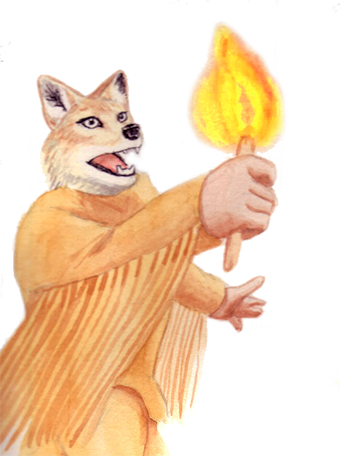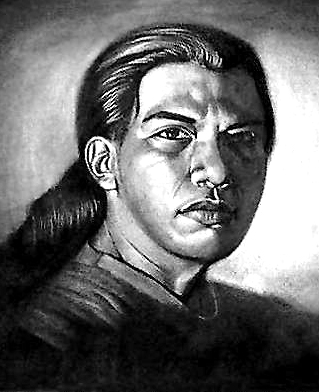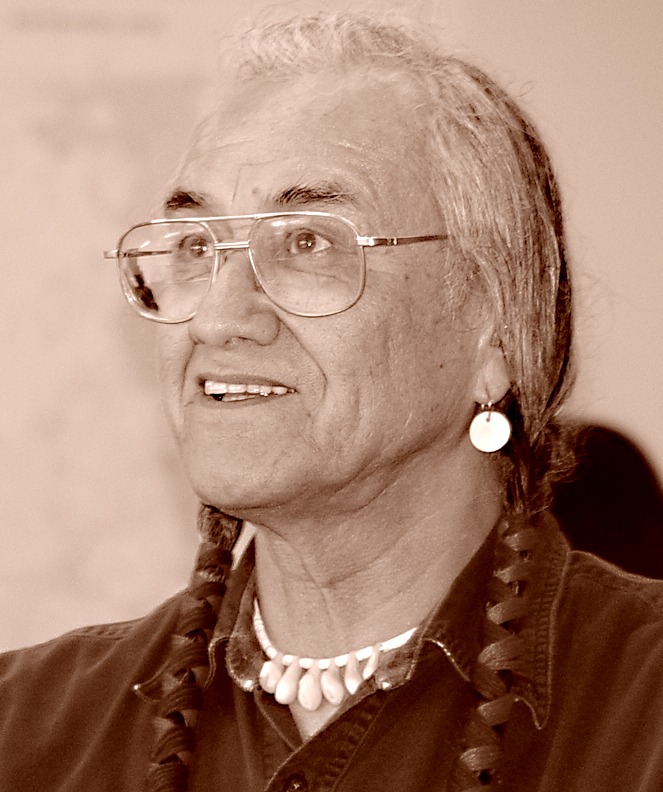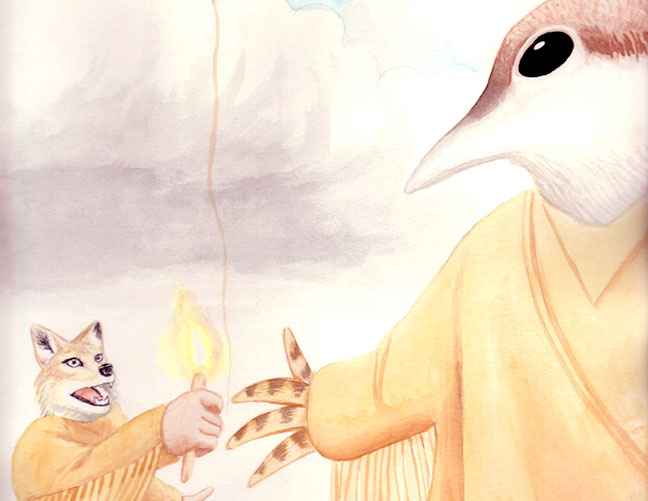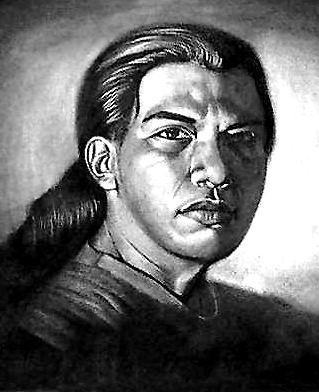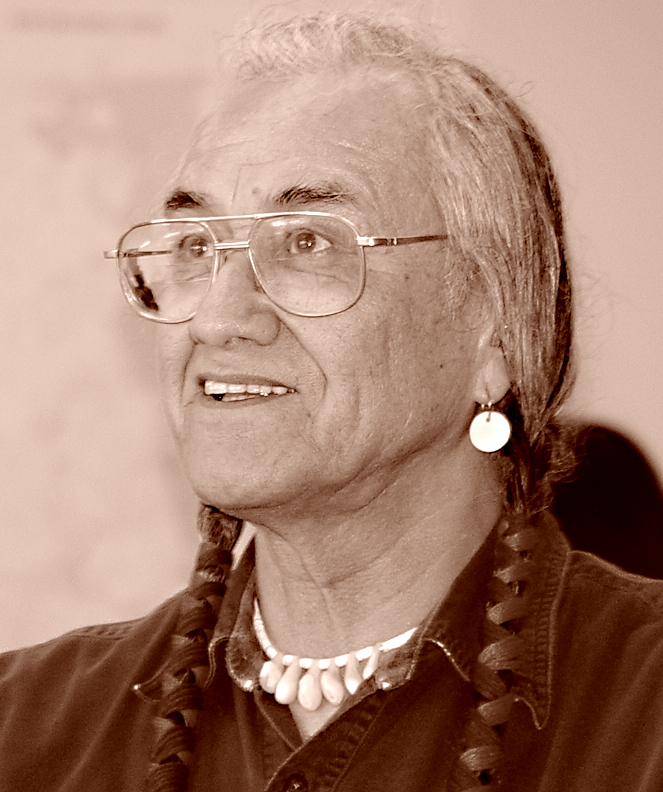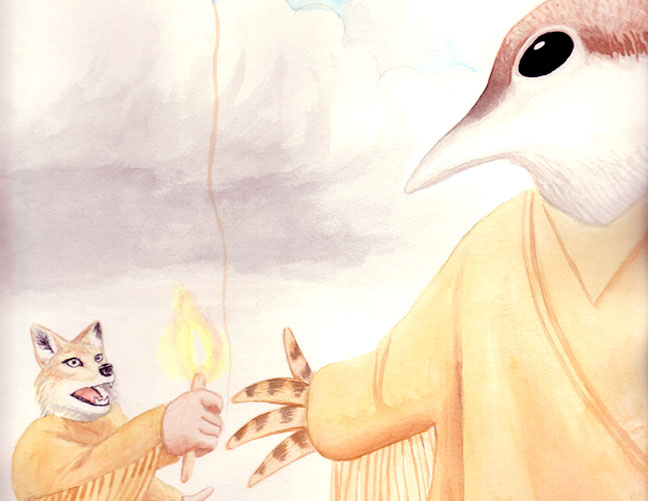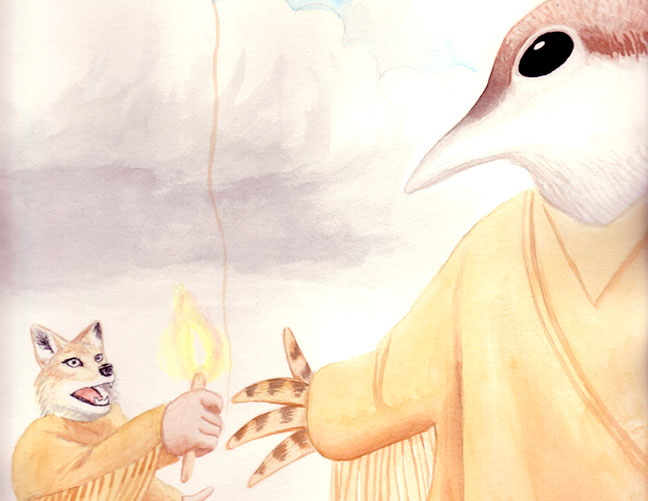Beaver Steals Fire
The Great Quest to Bring Fire from the Sky World to the Earth
Beaver Steals Fire
The Great Quest to Bring Fire from the Sky World to the Earth
Beaver Steals Fire
The Great Quest to Bring Fire from the
Sky World to the Earth
A Coyote Story
According to the traditional beliefs of the Salish, the Creator put animal beings on the earth before humans. But the world was cold and dark because there was no fire on earth. The animal beings knew that one day human beings would arrive, and they wanted to make the world a better place for them, so they set off on a great quest to steal fire from the sky world and bring it to the earth. And that is the plot of this tale, a story that reminds us that, while fire can be a destructive force, it is also a gift to us from the Creator.
Because it is not winter, we have put the story away. We will take it out again next winter. Please check back then. In the meantime, you can listen to a brief introduction to the story by clicking the link below.
Our traditional Coyote stories, the legends of Coyote, and the other animal people, should only be told or discussed during winter, when snow is on the ground. The elders usually bring out the stories in November and put them away again when the snow is gone—usually by late February or March. Coyote stories, like other parts of our traditional way of life, are part of a seasonal cycle. By following this tradition readers, teachers, and students can enjoy this aspect of our culture—keeping and saving something for the time of year during which it belongs. Thank you for observing this important tradition.
— Salish and Pend d’Oreille Culture Committee
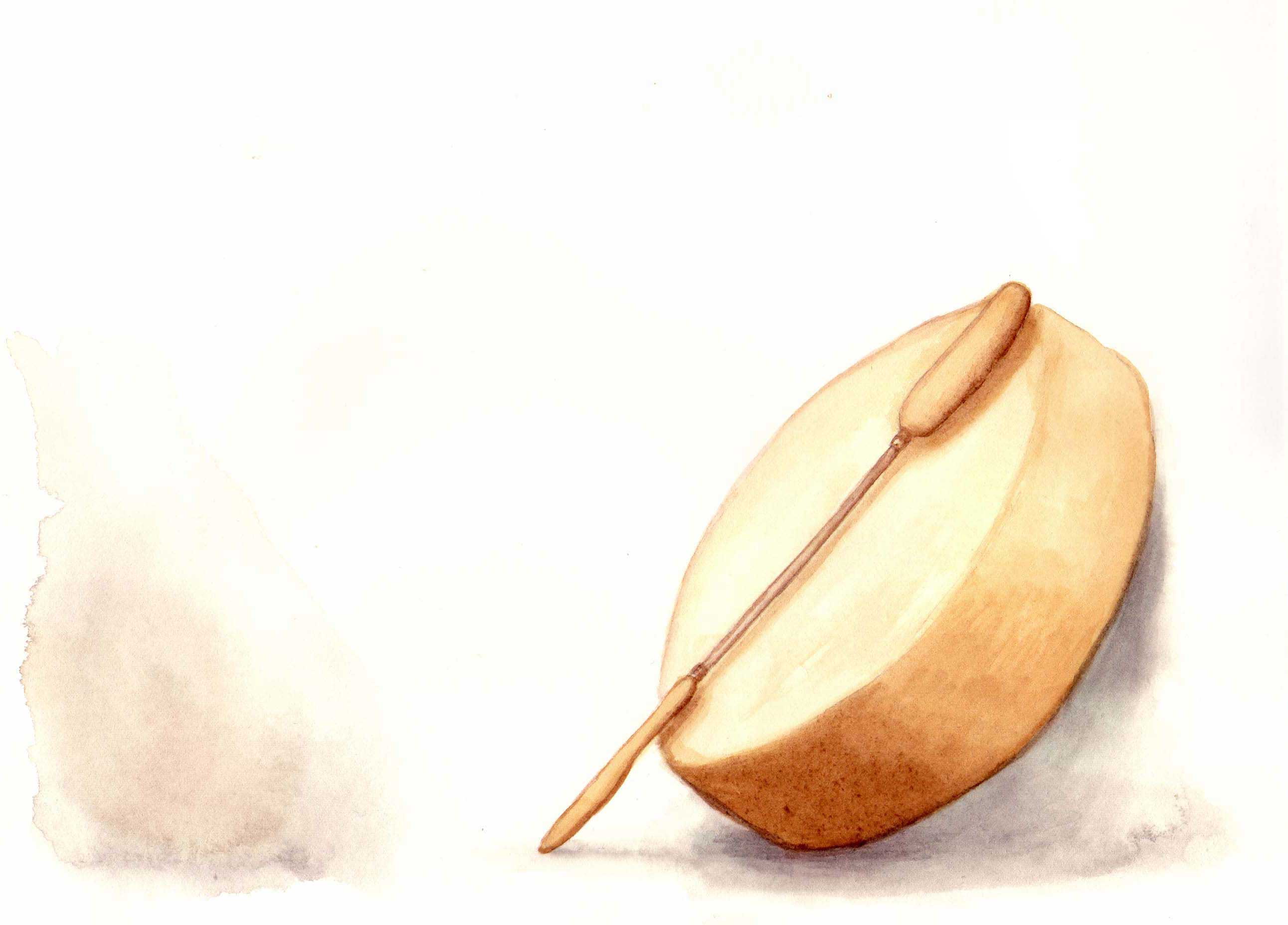
Listen to the Story's Introduction
by Germaine White
A Coyote Story
According to the traditional beliefs of the Salish, the Creator put animal beings on the earth before humans. But the world was cold and dark because there was no fire on earth. The animal beings knew that one day human beings would arrive, and they wanted to make the world a better place for them, so they set off on a great quest to steal fire from the sky world and bring it to the earth. And that is the plot of this tale, a story that reminds us that, while fire can be a destructive force, it is also a gift to us from the Creator.
Because it is not winter, we have put the story away. We will take it out again next winter. Please check back then. In the meantime, you can listen to a brief introduction to the story by clicking the link below.
Our traditional Coyote stories, the legends of Coyote, and the other animal people, should only be told or discussed during winter, when snow is on the ground. The elders usually bring out the stories in November and put them away again when the snow is gone—usually by late February or March. Coyote stories, like other parts of our traditional way of life, are part of a seasonal cycle. By following this tradition readers, teachers, 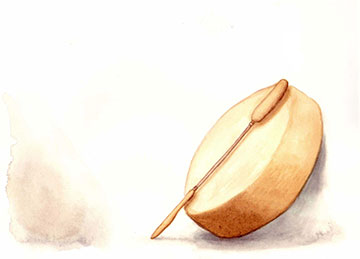
— Salish and Pend d’Oreille Culture Committee
Listen to the Story's Introduction
by Germaine White
A Coyote Story
According to the traditional beliefs of the Salish, the Creator put animal beings on the earth before humans. But the world was cold and dark because there was no fire on earth. The animal beings knew that one day human beings would arrive, and they wanted to make the world a better place for them, so they set off on a great quest to steal fire from the sky world and bring it to the earth. And that is the plot of this tale, a story that reminds us that, while fire can be a destructive force, it is also a gift to us from the Creator.
Because it is not winter, we have put the story away. We will take it out again next winter. Please check back then. In the meantime, you can listen to a brief introduction to the story by clicking the link below.
Our traditional Coyote stories, the legends of Coyote, and the other animal people, should only be told or discussed during winter, when snow is on the ground. The elders usually bring out the stories in November and put them away again when the snow is gone—usually by late February or March. Coyote stories, like other parts of our traditional way of life, are part of a seasonal cycle. By following this tradition readers, teachers, and students can enjoy this aspect of our culture—keeping and saving something for the time of year during which it belongs. Thank you for observing this important tradition.
— Salish and Pend d’Oreille Culture Committee
Listen to the Story's Introduction
by Germaine White
